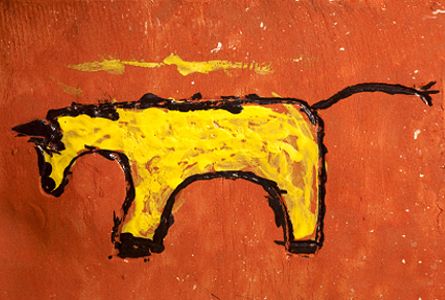by Louis Golino for CoinWeek
2012, as I predicted in January , has been an especially volatile one for gold and other precious metals. Earlier in the year gold and silver prices saw healthy gains, especially following pronouncements by Federal Reserve Chairman Ben Bernanke that interest rates would be held to close to zero through 2014.
Interest rates are perhaps the key determinant of metal prices, especial real post-inflation rates, since investors know that after taxes and inflation, they are losing money on both bank deposits and Treasury bonds. They have to get yield somewhere, and they are unlikely to put all their eggs in the stock market basket, especially after such a strong first quarter. Equity prices never go up in a straight line and are due for a pullback. To add some diversity to their portfolios investors are likely to look to gold and other commodities like oil.
Then at the end of February on Leap Day, prices dropped dramatically in one day.
 Many people explained the move as a reaction to comments from Federal Reserve Chairman Bernanke that seemed to reduce the prospects for further quantitative easing, even though on that very day, as I have explained before , the European Central Bank moved to make hundreds of billions of euros in low-interest loans available to European banks to prevent a collapse of the banking system across the pond.
Many people explained the move as a reaction to comments from Federal Reserve Chairman Bernanke that seemed to reduce the prospects for further quantitative easing, even though on that very day, as I have explained before , the European Central Bank moved to make hundreds of billions of euros in low-interest loans available to European banks to prevent a collapse of the banking system across the pond.
The more likely explanation for the Leap Year drop is a series of very large sell orders that were executed so quickly that the move was compared to last year’s flash crash in stocks. Then we saw a rebound in prices, as bargain buyers came in and gold headed back towards $1700.
But the first week of April witnessed another major drop, once again largely caused by the Fed. The minutes of the most recent Federal Open Market Committee meeting were released on April 4. Fed members focused on recent signs of improvement in the economy and said there was less need for more QE in the short-term but never actually took it off the table, reserving the right to do what it takes to keep rates low to prevent the economy from deteriorating again.
But markets took that as a sign QE was being taken off the table, and metals once again tanked.
Dennis Gartman, a well known commodities trader and analyst who appears frequently on television, said at the end of March that it would be foolish to sell one’s gold. He apparently changed his tune virtually overnight after the Fed minute release. Now he says that the two decade-long bull market in gold has come to and end, and that he expects prices to fall below $1600.
He said in his latest Gartman Letter that in retrospect gold has been in a bear market since last August, when it briefly surpassed $1900. This is surprising as Mr. Gartman has generally been bullish on metals, though he has shifted his views back and forth a great deal in the past year. Mr. Gartman’s views on metals have been characterized as flip-flopping by Tyler Durden (www.zerohedge.com) to such an extent that Mr. Gartman is seen as lacking credibility by most other metal analysts.
What is going on here? Are precious metal prices really driven solely, or even primarily, by the prospects for additional monetary easing in the U.S.? What about the rest of the world? What about market fundamentals like supply and demand? Do these not matter at all? Is it really lights out for precious metals?
Of course, no one knows for sure, and this is a confusing and quickly changing issue. But I think many people are getting ahead of themselves, misinterpreting what the Fed really said, what it is likely to do, and ignoring the global factors that help shape metal prices.
There are several problems with the current conventional wisdom that the bull run in metals is over or nearing its end, though I would definitely not rule out plenty of short to medium-term weakness.
First, a third round of quantitative easing does seem less likely in the short-term. But it won’t be long before the economy deteriorates, especially as we approach another protracted budget battle and struggle to raise the debt ceiling. In the view of Peter Schiff, CEO of EuroPacific Capital, too many people have what he calls “recovery fever,” believing economic conditions have improved more than they really have.
Already the rating agency Egan Jones has downgraded the U.S.’s credit rating another notch to AA from AA+, which is the second down grade since last summer’s debt debacle. If things get worse, the Fed will need to make more asset purchases, extend the maturity of bonds, or do some creative version of more QE. It is running out of options, yet has little choice but to continue on the QE path.
Second, whatever the U.S. does, other Central Banks have already made clear that they plan to continue their own QE. The European Central Bank, Bank of England, and Bank of Japan have all made this quite clear. In addition, officials from the Bank of England suggested recently that it was a mistake for Britain to sells its gold in the late 1990’s, and that it may be time to build up new gold reserves. Other central banks are believed to be purchasing more gold already, but they do so quietly.
Third, supplies are expected to remain tight and demand robust throughout the world for precious metals, especially in a negative real interest rate environment, even if in the short-term China’s economy continues to slow. China will still have a huge appetite for precious metals.
Fourth, metal prices are driven to a considerable extent by currency developments. Whatever happens day to day, the long-term secular trend continues to be dollar debasement and weakness. That will help support higher metal prices over time.
But in the short to medium-term, as worries about the European debt crisis return, there will be pressure on the euro, which will provide some brief dollar rallies that will create downward pressure on metals.
At the end of the day, it is the direction of the economy and the interest rate environment that will be key determinants of metal prices. Increased fears of recession will drive investors back into metals. As Peter Schiff told subscribers to his newsletter, “The recovery is not only going to falter – it’s going to evaporate like the mirage that it is.” Only time will tell if he proves to be right, but I would be surprised if we do not see at least some faltering of the recovery over the next year.
The disappointing jobs numbers released on April 6 may be a sign that the recovery is already faltering like it did this time last year and at the same time in 2010. And the acceleration in job growth the past couple months probably had a lot to do with the unusually warm winter most Americans experienced.
If Mr. Schiff is correct, the economy will deteriorate again soon, inflation will pick up before long, and metals will resume their upward trajectory. But if Mr. Gartman’s latest views prove correct, then we could see a big drop in metal prices soon, as investors flee risk assets.
Since there is no way to know at this point, and so many moving parts to this issue, the best course of action is to try to think longer-term and focus on fundamentals, which I believe continue to remain bullish for metals.
 Louis Golino is a coin collector and numismatic writer, whose articles on coins have appeared in Coin World, Numismatic News, and a number of different coin web sites. His column for CoinWeek, “The Coin Analyst,” covers U.S. and world coins and precious metals. He collects U.S. and European coins and is a member of the ANA, PCGS, NGC, and CAC. He has also worked for the U.S. Library of Congress and has been a syndicated columnist and news analyst on international affairs for a wide variety of newspapers and web sites.
Louis Golino is a coin collector and numismatic writer, whose articles on coins have appeared in Coin World, Numismatic News, and a number of different coin web sites. His column for CoinWeek, “The Coin Analyst,” covers U.S. and world coins and precious metals. He collects U.S. and European coins and is a member of the ANA, PCGS, NGC, and CAC. He has also worked for the U.S. Library of Congress and has been a syndicated columnist and news analyst on international affairs for a wide variety of newspapers and web sites.





Last week’s FOMC meeting minutes were actually released late in the day on April 3, not on April 4, as I wrote above.